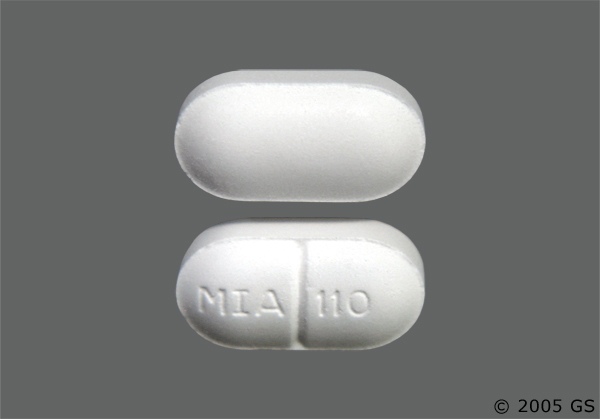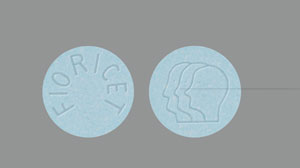Fioricet Withdrawal Timeline

| 12 to 24 hours after the last dose | Early withdrawal symptoms during Fioricet detox often include tremors, anxiety, headache, insomnia, increased blood pressure, and increased body temperature. |
| 16 hours after the last dose | Withdrawal symptoms become more severe and may include severe disorientation, hallucinations, seizures, and delirium. |
| 10 to 14 days after the last dose | The majority of withdrawal symptoms typically dissipate about two weeks after starting Fioricet detox, but you may still experience strong cravings, feel depressed, or have suicidal thoughts. |
The timeline above is helpful and can give you a general idea of what you can expect during Fioricet withdrawal, but it’s important to know that the severity and duration of drug withdrawal and Fioricet detox can vary greatly depending on certain factors,

like:
- How long you’ve been taking Fioricet
- How much Fioricet you take each time
- Your diet
- If you take or abuse other drugs
- How frequently you exercise
- Your physiology
- The method you used to quit Fioricet (cold turkey, Fioricet detox program, etc.)
Treatment for Fioricet Addiction
Fioricet addiction is a medical disorder that requires ongoing treatment to overcome. Although a Fioricet detox program can help you get sober, staying that way will require further treatment.
Research has shown that long-term rehab that lasts at least 90 days provides the best opportunity for lasting, genuine life change and recovery. While many 30-day rehab programs promise success in sobriety, staying in treatment longer greatly reduces your risk of relapse.
During drug rehab, you’ll learn how to overcome your Fioricet addiction for good by:
- Attending educational lectures about addiction and recovery
- Engaging in a recovery program such as the 12-Step Program
- Learning how to recognize and respond to triggers, cravings, and high-risk situations
- Gaining important life skills that will aid your recovery
- Taking the time to heal physically and emotionally from the effects of substance abuse
Clients in drug rehab often work with addiction recovery professionals to achieve the objectives listed above with an evidence-based treatment program that addresses co-occurring disorders for well-rounded care. This often consists of different types of behavioral therapy, individual counseling, group counseling, family therapy, and peer support.
Inpatient Drug Rehab vs. Outpatient Drug Rehab for Fioricet Addiction
If you are searching for a drug rehab program for Fioricet addiction, many different treatment options may help you achieve your sobriety goals. However, two of the most common types of drug rehab are inpatient and outpatient programs. While both types of Fioricet treatment are heavily focused on the principles of recovery, they differ in several ways.
| In residential Fioricet rehab, clients: Live on-site at the rehab center while they complete the program Maintain a rigid daily schedule Attend individual and group counseling sessions several times each week Attend recovery-focused group activities on and off-site Have immediate access to medical and clinical treatment at the rehab center | In outpatient Fioricet rehab, clients: Attend outpatient recovery group sessions a few times a week for several months Complete recovery-related assignments independently outside of group sessions Continue working, going to school, and attending to other personal responsibilities while completing rehab |
Most often, if you are heavily addicted to Fioricet, an addiction treatment specialist will recommend that you attend an inpatient drug rehab, as this type of program provides a safe, sober environment, 24/7 support, treatment for co-occurring disorders, and a heavy amount of structure throughout your Fioricet treatment. However, talking to your doctor or an addiction treatment specialist directly is the best way to determine which type of Fioricet treatment program is right for you.
The cost of Fioricet rehab varies greatly depending on the program and recovery support services offered, however, many rehab centers also provide several different payment options to reduce the financial burden. You may be able to pay for Fioricet rehab by using:
-
-
- Health insurance benefits
- Employee Assistance Programs (EAP)
- Financed healthcare loans
- Credit cards
- Crowdfunding
- HSA funds
-
Continued Care Options for Fioricet Addiction Treatment
After completing Fioricet rehab, you may also want to consider enrolling in a continuing care program such as sober living or aftercare. These types of programs offer ongoing recovery support services to people who are newly sober, in transition or have recently relapsed.
Sober Living Programs
If you don’t have a stable home to return to after rehab, a sober living program can provide a safe and supportive substance-free environment where you can thrive in recovery.
Sober living homes are shared group living spaces that are designed to help men and women who are recovering from addiction by providing a transitional home where they can adjust to living a sober life outside of rehab at their own pace.
Many sober living homes offer recovery support services to ease the transition, including:
- A structured living environment
- Recovery programming
- Drug and alcohol testing
- Educational planning
- Employment assistance
- Family support
The cost of a sober living program will vary depending on the home’s location, amenities, and services, but payment is generally collected once a month.
Aftercare Programs
Aftercare programs are geared toward alumni of drug and alcohol rehab programs who are adjusting to life outside of rehab. Aftercare groups meet weekly and provide a supportive, honest, and open environment where people can come to discuss ongoing issues related to their recovery.
Group discussions in aftercare are educational, informative, encouraging, and supportive and they offer a safe space where clients can openly share life’s challenges with their peers in recovery.
